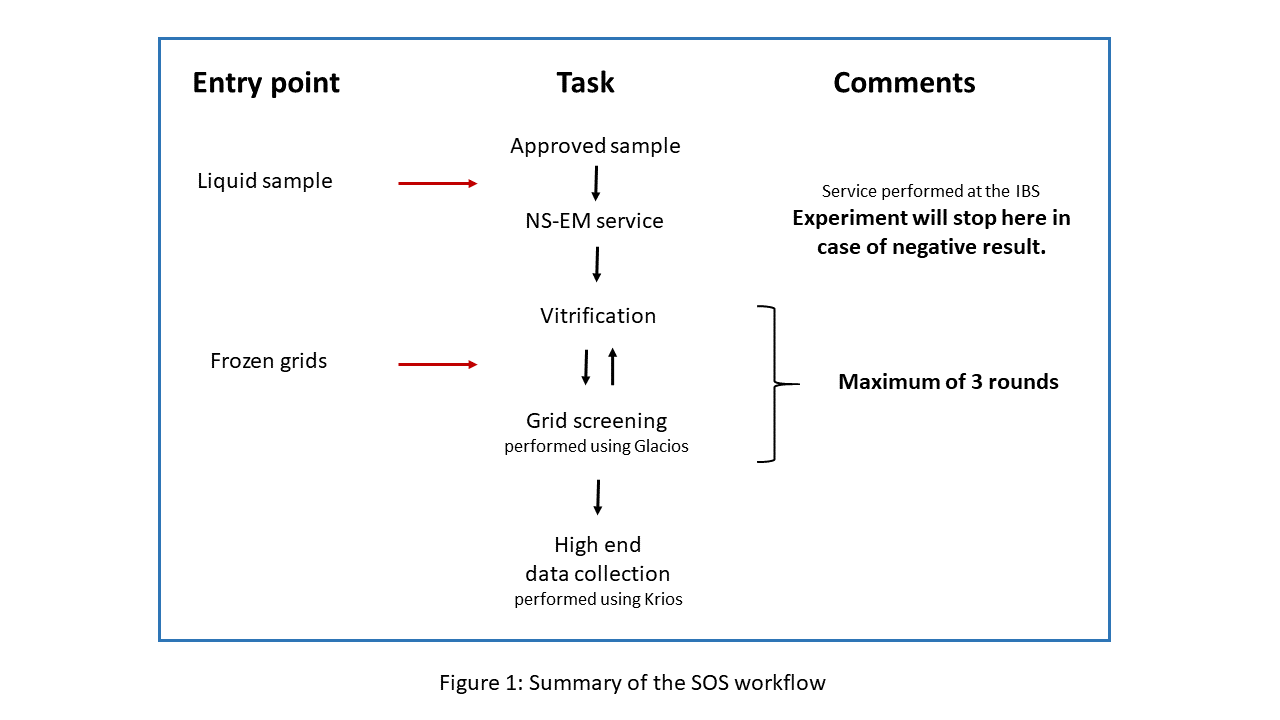- Home
- Users & Science
- Find a beamline
- Structural biology
- Our beamlines
- CM01 Cryo-electron microscope
- Solution to Structure (SOS) Service
Solution to Structure (SOS) Service
Solution to Structure (SOS) Service
We are offering, mainly for users who have no or very limited access to cryo-electron microscopes an extended service for a limited number of experiments. This service can start either from a liquid sample of a macromolecular assembly of which sufficient proof (gel filtration profile, MALLS, SAXS, DLS etc.) is given with respect to homogeneity and monodispersity or from Frozen cryoEM grids that are not yet screened. The service will encompass:
- a quality control step using negative staining (NS-EM) and, in the case of acceptable results:
- preparation of sample cryo-grids using a Vitrobot
- screening of those grids
- collection of a 'small' dataset in the case of a successful step iii
- collection of a high-end dataset in the case that iv shows promising results.
Figure 1 summarises the service. If step (i.) shows no acceptable result, the experiment will stop at this stage. Steps (ii.) and (iii.) are limited to three trials, representing the preparation of a total of 24 grids and the screening thereof. Steps (iv. and v.) are only performed if step iii shows that grids to be of sufficient quality.

Access to this service is given through peer-reviewed access via the ESRF MX BTAP rolling access scheme (https://www.esrf.eu/UsersAndScience/UserGuide/Applying/ProposalGuidelines/MXRollingCryoEM) clearly indicating that this proposal is an SOS pipeline proposal and adding all information needed to the proposal. Additionally, knowledge of image processing including an adequate IT infrastructure is required and should be mentioned in the proposal.
Given the amount of time needed to perform the experiments and scientific input given, this service is, at the current time, carried out on a collaborative basis with the CM01 scientist carrying out the work. The presence of the external user during the experiments is not required. Progress of the experiment can be followed using ISPyB-EXI as well as through remote discussions with the relevant CM01 scientist.



